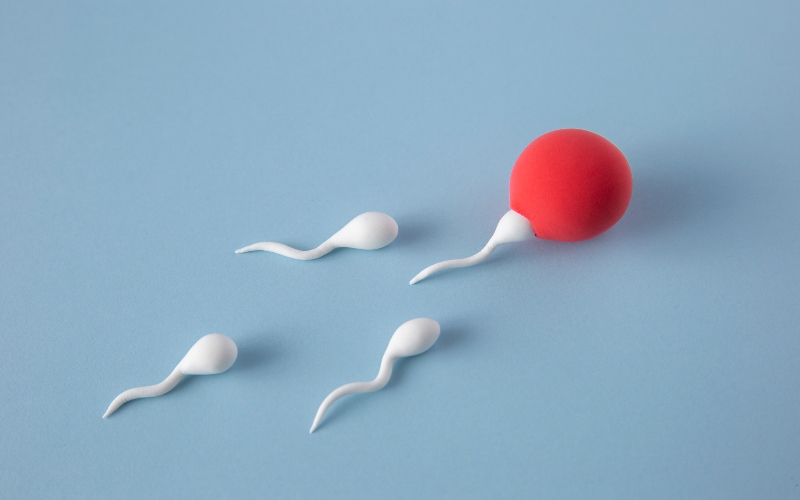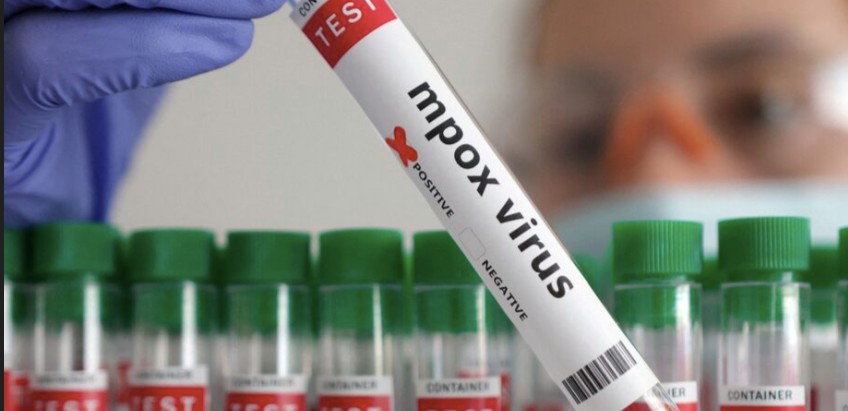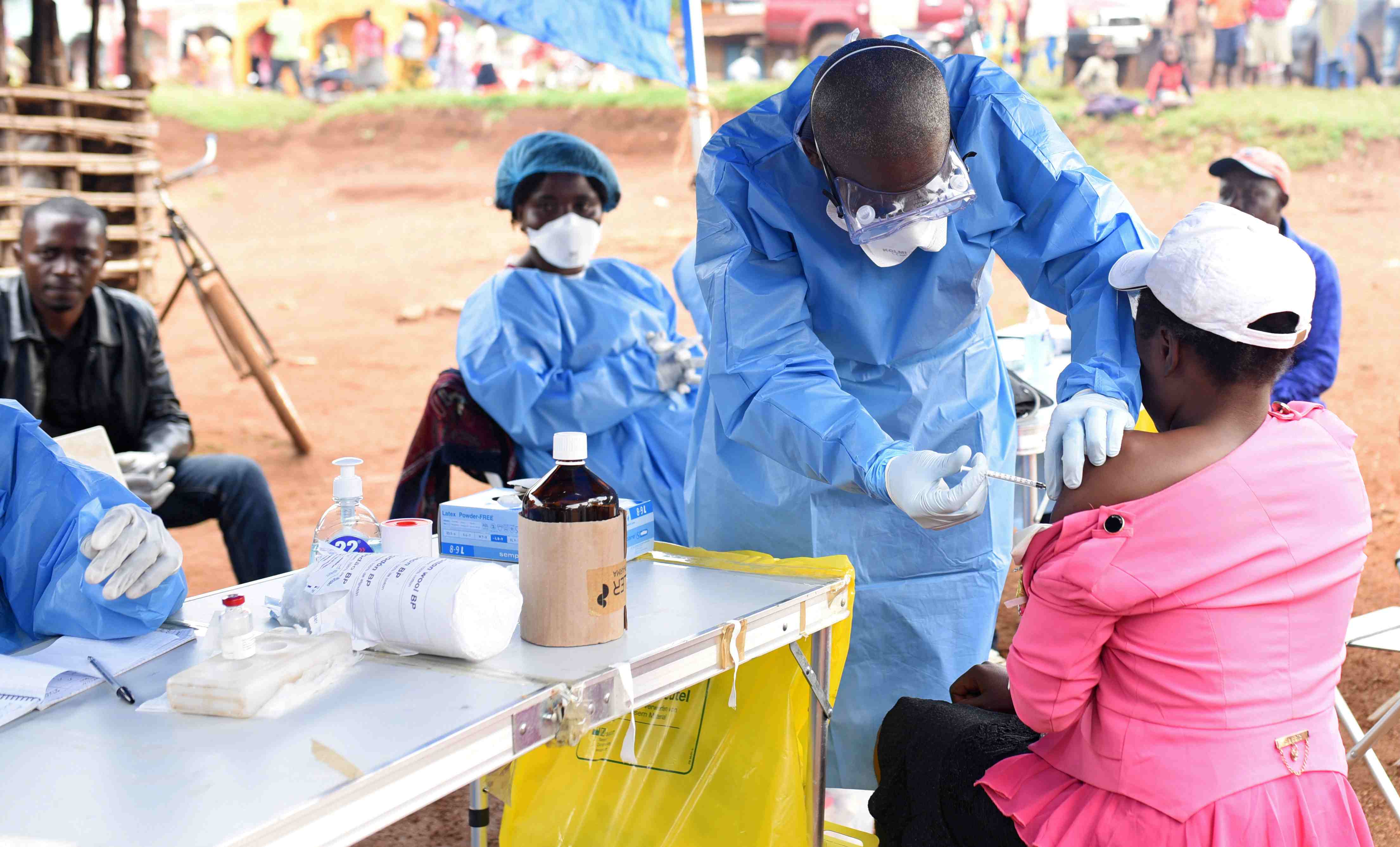Older men’s sperm more likely to carry disease-causing mutations, study reveals

The study shows that men's sperm doesn't just get older - it changes in a way that favours some harmful mutations, making them more common over time. This helps explain why children of older fathers are at slightly higher risk for certain genetic conditions.
A study published in Nature has revealed that as men get older, their sperm doesn't just age - it becomes more likely to carry harmful genetic mutations.
Scientists from the Wellcome Sanger Institute and King's College London discovered that some of these mutations give sperm cells a competitive advantage - allowing them to multiply faster.
The researchers looked at how men's sperm changes as they age, and what that might mean for the health of future children.
More To Read
- Clinical trial offers lifeline for men with recurrent prostate cancer
- KEMRI, Gates Foundation launch Sh516 million initiative to boost women’s health research
- Northern Kenya PWDs chairperson sounds alarm over lack of autism support
- How Kenya's adoption of single-dose HPV vaccine could boost fight against cervical cancer
- Seven Kenyan men prove paternity case against BATUK soldiers
- Pharmacy and Poisons Board assures paracetamol use during pregnancy safe
They studied sperm from 81 healthy men between the ages of 24 and 75. They used DNA testing to look for rare changes (mutations) in the sperm. These tiny changes in the genetic code can sometimes lead to diseases.
The main finding is that as men age, their sperm is more likely to carry harmful genetic changes. For example, in men in their early 30s, around 2 per cent of their sperm carried a known disease-causing mutation. But by the time men reached their 60s or 70s, that number rose to around 4.5 per cent or more.
"Mutant" sperm cells
But what's even more surprising is how this happens. It's not just that older men have had more time for their sperm to collect random damage. The researchers found that some sperm cells with certain mutations get a boost - they grow and divide faster than normal sperm cells. These "mutant" sperm cells take over more of the sperm supply.
The study found about 40 genes where this kind of hidden evolution was happening. Many of these genes are linked to serious conditions like developmental disorders, some cancers, and neurodevelopmental problems in children.
This doesn't mean that all older men will have children with genetic problems. Most sperm still don't carry these harmful changes, and even when they do, not all of them lead to disease.
But it does show that the chance of passing on a harmful mutation increases with age, and that it's not just due to time - it's also because of this hidden process that gives certain mutated sperm cells a growth advantage.
Additionally, the study shows that men's sperm doesn't just get older - it changes in a way that favours some harmful mutations, making them more common over time. This helps explain why children of older fathers are at slightly higher risk for certain genetic conditions.
The researchers suggest this new understanding could be useful in the future for fertility advice, genetic counselling, or sperm donation. It might also help scientists study how to prevent some of these risks.
Growing evidence suggests that sperm from older men accumulate more genetic mutations, both random and those influenced by selection, which can increase the chance of passing harmful genetic changes to their children. Although the risk rises gradually with paternal age, the absolute risk for each child remains quite low, meaning most children born to older fathers are healthy.
Sperm quality
Several mechanisms explain this increase in mutations. One is the rise in new point mutations because sperm-producing stem cells divide many times over a man's life. The older the father, the more divisions have occurred, and thus, more opportunities for errors to happen.
Another mechanism is the "selfish selection", where certain mutated sperm cells gain a growth advantage, causing those mutated cells to multiply more than normal ones. This phenomenon was demonstrated in a 2025 study published in Nature.
Further, sperm quality tends to decline with age, showing more DNA fragmentation and poorer movement and shape, which can affect fertility and increase risks such as pregnancy loss or health problems in children.
Changes in epigenetic markers and microRNA profiles in sperm due to ageing have also been observed, like in mouse studies showing that altered sperm microRNAs from older fathers can impact offspring brain development.
Older paternal age has been linked to increased risks of several conditions in children, including autism spectrum disorder (ASD), schizophrenia and psychosis, congenital heart defects, cleft palate, childhood cancers, preterm birth, low birth weight, and stillbirth. For example, a Rutgers study has reported some of these associations.
Mutation disorders
A 2019 study titled "Paternal-age-related de novo mutations and risk for five disorders", published in Nature Communications, analysed genetic data from over 10,000 families where the DNA of the father, mother, and child was sequenced. This allowed researchers to identify new genetic mutations in the child that were not present in either parent, called de novo mutations, which increase with the father's age.
The researchers focused on five disorders: autism spectrum disorder (ASD), congenital heart disease (CHD), epilepsy (EPI), intellectual disability (ID), and schizophrenia (SCZ). They found that the number of new mutations in the child rose by about 2.5 per cent for each additional year of the father's age. For instance, a 45-year-old father would pass on about twice as many new mutations as a 25-year-old father. These mutations were linked to higher risks of the studied disorders.
Their genetic models estimated that if a man delays fatherhood from his mid-20s to his mid-40s, the risk of his child developing schizophrenia increases by roughly 9 per cent due to these mutations, and the risk for intellectual disability rises by about 20 per cent. The risks for autism, epilepsy, and congenital heart disease also increased, but to a lesser extent.
To confirm these findings, the researchers compared their genetic risk predictions with health records from Danish national registries, covering over two million births. They found that for autism and schizophrenia, the increase in risk with paternal age seen in the population closely matched their mutation-based predictions.
However, for intellectual disability, epilepsy, and congenital heart disease, the real-world increase in risk was smaller than their models suggested. This indicates that other factors besides sperm mutations likely contribute to these diseases.
While older paternal age is clearly linked to more mutations in sperm and a slightly higher risk of some disorders in children, these mutations explain only a small part of the overall risk. Other genetic, environmental, and lifestyle factors play significant roles as well. Importantly, the absolute risk remains low, and most children born to older fathers are healthy.
Top Stories Today












































